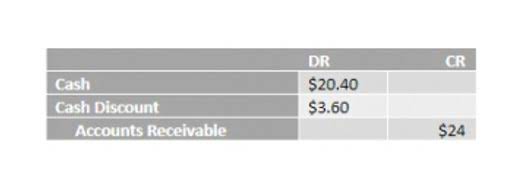
PVIFA is also a variable used when calculating the present value of an ordinary annuity. You can also incorporate the potential effects of inflation into the present value formula by using what’s known as the real interest rate rather than the nominal interest rate. Knowing how to write a PV formula for a specific case, it’s quite easy to tweak it to handle all possible cases. If some argument is not used in a particular calculation, the user will leave that cell blank.
Understanding the PVIF

Analysts will use discount factors when performing financial modeling in Excel if they want to have more visibility into the NPV formula and to better illustrate the effect of discounting. Some analysts prefer to calculate explicit discount factors in each time period so they can see the effects of compounding more clearly, as well as making the Discounted Cash Flow or DCF model easier to audit. However, a benefit of manually calculating the discount factor is that you can see what the present value of each individual cash flow is, as opposed to only the total NPV.
Example of PV Formula in Excel

The answer tells us that receiving $5,000 three years from today is the equivalent of receiving $3,942.45 today, if the time value of money has an annual rate of 8% that is compounded quarterly. The interest rate used is the risk-free interest rate if there are no risks Certified Public Accountant involved in the project. The rate of return from the project must equal or exceed this rate of return or it would be better to invest the capital in these risk free assets.

PV Formula in Excel

A higher present value is better than a lower one when assessing similar investments. One key point to remember for PV formulas is that any money paid out (outflows) should be a negative number, while money in (inflows) is a positive number. It is a simple table that features the PVIFAs of common combinations of rates and terms. For example, each column might feature a different rate while each row features a different term.
Add 1 and the discount interest rate, then multiply the sum by the number of years or another time period. Divide the future sum to be received by that multiplication result, and you have the present value interest factor (PVIF). Imagine you are set to receive $10,000 in 5 years, and you want to determine the present value of this future sum. By plugging in the appropriate values for r and n into the formula, we can calculate the PVIF and determine the present value of our future cash flow. For example, in 2021, the discount factor comes out to 0.91 after adding the 10% discount rate to 1 and then raising the amount to the exponent of -1, which is the matching time period. We see that the present value of present value factor formula receiving $10,000 five years from today is the equivalent of receiving approximately $7,440.00 today, if the time value of money has an annual rate of 6% compounded semiannually.
By letting the borrower have access to the money, the lender has sacrificed real estate cash flow the exchange value of this money, and is compensated for it in the form of interest. The initial amount of borrowed funds (the present value) is less than the total amount of money paid to the lender. The NPV formula is a way of calculating the Net Present Value (NPV) of a series of cash flows based on a specified discount rate.
In financial accounting this term refers to the amount of debt excluding interest. Payments on mortgage loans usually require monthly payments of principal and interest. The easiest and most accurate way to calculate the present value of any future amounts (single amount, varying amounts, annuities) is to use an electronic financial calculator or computer software. The tables below show the number of periods (n) and the related interest rate (i) for four different compounding assumptions. Starting off, the cash flow in Year 1 is $1,000, and the growth rate assumptions are shown below, along with the forecasted amounts. A perpetuity refers to periodic payments, receivable indefinitely, although few such instruments exist.
- To calculate the Present Value of each cash flow, Summit Capital Partners applies the PV Factor to each year’s cash flow.
- By understanding the present value factor (PVF), corporations and institutional investors such as hedge funds can make financially sound decisions in their capital allocation strategies, among other high-stake applications.
- We’ll now move to a modeling exercise, which you can access by filling out the form below.
- It is determined by discounting the future value by the estimated rate of return that the money could earn if invested.
- PV calculations can also tell you such things as how much money to invest right now in return for specific cash amounts to be received in the future, or how to estimate the rate of return on your investments.
All such information is provided solely for convenience purposes only and all users thereof should be guided accordingly. Go a level deeper with us and investigate the potential impacts of climate change on investments like your retirement account. From the above calculations, we can establish that the present value of $1200 is less than $1000. Therefore, Company S should choose to receive $1000 today rather than waiting for 2 years. The major drawback of a present value interest factor table is the necessity to round calculated figures, which sacrifices precision. In the present value formula shown above, we’re assuming that you know the future value and are solving for present value.
- The annual interest rate is approximately 12% (the approximate monthly interest rate x 12 months).
- CFI is on a mission to enable anyone to be a great financial analyst and have a great career path.
- The present value (PV) concept is fundamental to corporate finance and valuation.
- It is the mathematical result of revenues and gains minus the cost of goods sold and all expenses and losses (including income tax expense if the company is a regular corporation) provided the result is a positive amount.
- The Present Value Factor Formula is a fundamental concept in finance that is primarily utilized to determine the current value of a sum of money expected to be received in the future.
- For the PV formula in Excel, if the interest rate and payment amount are based on different periods, then adjustments must be made.
- This table usually provides the present value factors for various time periods and discount rate combinations.
Let’s say you loaned a friend $10,000 and are attempting to determine how much to charge in interest. If you need to be very precise in your calculation, it’s highly recommended to use XNPV instead of the regular function. The above example captures the dependence of DF on the tenure of the investment. Carbon Collective is the first online investment advisor 100% focused on solving climate change. We believe that sustainable investing is not just an important climate solution, but a smart way to invest.



